China: Big Pharma's Long March to End?
Pharmaceutical Executive
China's explosive growth in R&D is putting the natiion on its way to becoming the world's second-largest market by 2020
This sponsored supplement was produced by Focus Reports.
Project Director: Julie Avena
Editorial Coordinator: John Frager
Editorial Assistant: Alexander Tapper
Information partner: www.gbipharma.com
For exclusive interviews and more info, please log onto Pharma.FocusReports.net or write to contact@focusreports.net

Hector Joseph, Herbal Medicine, 2008
While the global economic system is still adapting to China's role as the 'world's factory,' the country's explosive pharmaceutical sector presages yet another seismic shift in global trade flows. Two revolutions are currently underway in China: The first is the rapidly growing importance of the Chinese pharmaceutical market, which has outpaced GDP growth, expanding at approximately 20% in recent years. Many analysts project China to become the world's second largest market by 2020. The second is the explosive growth of Chinese R&D, bootstrapping with outsourced services and inexorably moving towards in-house portfolios of innovative drugs.
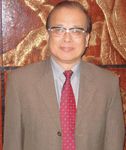
Yu Mingde (CPEA)
Current figures mask these subterranean shifts, where Big Pharma only sees 1.5% of total sales from this market, which is projected to reach USD 28 billion in prescriptions in 2010. The conventional OTC market is also tremendous, currently valued at around USD 10 billion and counting. As with most everything in China, the market also has 'Chinese Characteristics,' where Traditional Chinese Medicine (TCM) represents another segment worth approximately USD 21 billion encompassing sales of herbal remedies and other treatments that have been handed down over the millennia. TCM treatments are part and parcel of an ancient Chinese philosophical tradition that aims to bring the body's various organs into harmony, rather than focus on individual symptoms and proximate causes. The TCM segment is undergoing rapid modernization with both modern formulation techniques as well as exhaustive research into isolating active ingredients for pharmacological efficacy. However, these modernization efforts are still in their infancy. In the pharmaceutical segment, innovative therapeutics are dwarfed by generics at a scale of four to one, and this proportion is likely to increase as healthcare reform favors local generic producers. Only a few years ago, investing in Chinese R&D was hamstrung by fears of IP leakage. Today these fears often seem a distant memory as global pharma sinks hundreds of millions of dollars into R&D infrastructure, while Chinese startups build competitive IP portfolios of their own. In some cases, Chinese firms have even pursued IP litigation against the multinationals. If there is to be a reset to the innovative pharmaceutical business model, the Middle Kingdom will likely be ground zero.
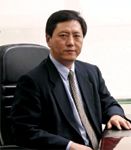
Wei Huacheng (Beijing Pharma Group)
Chinese Style Universal Healthcare: A dose of pragmatism
As the Chinese economy has rebounded, global investors are hoping that Chinese consumption may make up for continued lackluster performance in Western markets. Unfortunately, a household savings rate at nearly 40% has kept a lid on consumption. Consumers' reticence to open their wallets is frequently attributed to shortcomings in the social safety net, particularly in education and healthcare. Thus the 2009 Chinese healthcare reform, an investment of USD 124 billion over the next three years, will not only directly impact the lives of tens of millions of rural Chinese, but may also have global implications. The reforms are not in response to a deficit in the quality of care. Eric Bouteiller, Chairman of the EU Chamber of Commerce in Tianjin, believes that "now, especially in the big cities and large hospitals, you have doctors on the same level as European or American specialists." The major problem is sharply unequal access to high level care and disseminating services to a large and impoverished rural and suburban population. There are a number of programs currently in place and they have been hastily extended in an attempt to cover China's 1.3 billion citizens by 2020.

Howard Balloch (The Balloch Group)
However, conditions are far from perfect. Christian Grapow, General Manager of Solvay China, indicates that corruption, inefficiency and inequities in the system have even prompted cases of patients attacking doctors in hospitals. The government is certainly aware of poor patients' frustrations and has long been searching for an effective solution. Howard Balloch, former Canadian Ambassador to China and President of China's leading independent boutique investment bank, The Balloch Group, relates an encounter between a Canadian official and the Premier of China. "The Premier turned to the Canadian official and said, 'we would love to be as Socialist as Canada, but we can't afford it.'" Ambassador Balloch observes "Like many areas of reform, this country doesn't start from an ideological basis, but rather from a pragmatic viewpoint, recognizing that the provision of basic healthcare services to the people is a necessary component of social stability."

David Ricks ( Eli Lilly)
The mechanics of the health care reform are very much a pragmatic affair, emphasizing the construction of community health centers in rural and suburban areas to alleviate the pressure on this under served population. Yu Mingde, former member of the National Development and Reform Committee (NDRC), describes the highlights and implications of the health care reform. "There will be a general expansion of the total market affecting all companies across the country," predicts Mr. Yu. "The five policies adopted by the government include: new farmers and the health care system, the health care insurance system for urban residents, the 15 types of infectious diseases with the national free treatment policy, the planned 13 types of vaccine with nationwide free vaccination, and the State-aid system for poverty-stricken populations." Mr. Yu further estimates that reform policies will result in an "increase in drug consumption between 160-170 billion RMB." There will also be strong support for generics and the primary drug reimbursement list, under the auspices of the Basic Medical Insurance program (BMI), is undergoing a long awaited overhaul, the first since 2004. Dan Zhang, Chairman and Founder of Fountain Medical Development (FMD), a Contract Research Organization (CRO), outlines other structural reforms such as "new guidelines issued by the SFDA specifically saying they will speed up approval for four classes of drugs. First are New Chemical Entities (NCE), candidates that have never been approved anywhere. Second are unmet medical needs such as oncology or pandemic diseases. Third, orphan medications. Fourth, new uses or combination uses of Traditional Chinese Medicine (TCM)." Mr. Zhang believes that further changes are on the horizon. He points out that the State Food & Drug Administration (SFDA) "has begun to systematically translate US drug development guidelines into Chinese." This is a significant signal regarding the direction in which China wants to move.
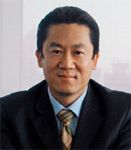
Pony Lu (Servier)
Big Pharma executives have not played a very vocal role in the Chinese health care debate. Many would probably agree with Merck Sharp and Dohme's GM Michel Vounatsos who advises, "One should not be in China to change China. One should come to this country to understand China and be here to support the policy priorities already established in the country." However, many multinational pharmaceutical firms view the short-term impact of the reforms with a certain level of caution. Pony Lu, General Manager of Servier, notes, "We are likely to see even stronger price controls by the government in order to manage its healthcare spending. The patient pool in these new areas is indeed huge, but consists mainly of people with very low income levels, who have little ability to pay for drugs themselves." These concerns have kept most MNCs on the sidelines, yet there can be little doubt that current infrastructure investments and structural reforms will significantly improve patient outcomes over the coming years.
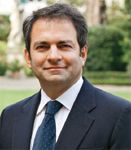
Michel Vounatsos (MSD)
Let a Hundred Flowers Blossom: A Deeply Decentralized Framework
China has always had a deeply decentralized political structure, where ancient emperors could often hope for little more than loosely administering the many far-flung provinces. The modern Chinese government is somewhat more centralized, however, aside from military and foreign affairs, regional and local governments often have vast and far-reaching jurisdiction. Decentralization has played an important role in China's rapid economic growth, spurring intense competition to attract investment. Less positively, decentralization has spawned a vast array of policies and standards across the country. These regional differences have a distinct impact on all economic activity, and particularly on heavily regulated industries such as pharmaceuticals. To begin with, there is no Chinese pharma company with nationwide operations. The largest Chinese firm is Hayao, based in the far North Eastern city of Harbin, but it remains a distinctly regional player. Some distributors have attempted to build nationwide scale through acquisition, such as Sinopharm and Shanghai Pharma, but they are quite far from operating as a single entity. These firms function as holding companies comprised of independent, and at times competing, regional players. David Ricks, General Manager at Eli Lilly observes, "people talk about the country in terms of cities, and there's a reason for this: the cities behave differently. There is not one China. I think of it more like four Europes, which in population and differences between markets is roughly right." Regional policy variations impact every aspect of the business, from sales and marketing to the design of manufacturing facilities. Hooker Cockram, a construction firm headquartered in Melbourne, has extensive experience working with multinational pharmaceutical firms. The company has developed a consultative approach to help multinationals navigate the complexities of China's provinces' ever-changing rulebooks. Hooker Cockram General Manager, Greg Mithen, believes "The SFDA (State Food and Drug Administration) rules are more like guidelines, as the interpretations in Jiangsu Province and Tianjin Municipality could actually be completely divergent. When we create a design, we have to do it on a basis of what we think will work in China but when we put it through the actual process, we need to adjust our plans based on each province's characteristics." The SFDA itself is quite decentralized with independent branches that execute policy in each of the leading urban markets. Thus, many foreign firms tend to approach the Chinese market with an array of regional strategies as opposed to conceiving of the country as a single market.

Christian Grapow (Solvay)
The Search for the next Growth Center: The Rural Question
It is often said that there are two Chinas, a sophisticated urban and modern China, close to or on par with the developed world, as well as a rural and poor China that is still very much a part of the 3rd world. Of course the truth is far more nuanced. Major cities such as Shanghai, Beijing and Guangzhou have large, wealthy populations and are experiencing steady growth, while the markets in lesser-known cities such as Zhengzhou and Chongqing are undergoing booming expansions. As quickly as the recent boom markets have emerged, new ones will necessarily take their place and companies are constantly on the lookout for the sudden emergence of the next growth engine. However, it is not only a search for new physical locations, but also for new market segments. There are certainly many options to choose from as outlined by Michael Ryde, General Manager of Lundbeck. "The market is extremely fragmented; in a way it is as if there were several coexisting small markets for different groups of patients such as those paying out of pocket, city workers, farmers, etc."
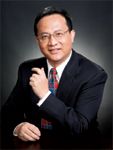
Pan Aihua (Sinobioway)
Drug portfolios must be carefully tailored to these fragmented market dynamics, especially to the huge potential in lower market segments. Eli Lilly still sells Prozac in China, which is actually one of the key markets for the ageing drug worldwide. However successful penetration of these segments comes down to more than careful portfolio selection. Marketing carryover is sharply lower than in Western markets, meaning that drugs are far more promotionally responsive. Portfolios need to be sustained with constant investment, but on the other hand, new drugs can grow far more rapidly than in Western markets. Lilly's GM, David Ricks, comments, "We know that if we don't invest, it will slow down, and if we do invest, it will grow stronger. A manager can't be so clever with their money in China: they have to make a business case product by product."

Liam Condon (Bayer)
One of the big challenges in creating the right marketing strategy is timing. The opportunities are staggering and in some ways obvious, but timing market penetration is not. Some companies have even suffered from premature investment in this market. Ryde remarks, "one of the keys to success in China is to have a lot of patience and long-term perspective." In this vein, Lundbeck has been working to increase sophistication in the marketplace and has recently opened a branch of the Lundbeck Institute to help train doctors in the field of Alzheimers and other Central Nervous System (CNS) diseases. Mr. Ryde sees this as particularly important in fighting misperceptions, such as the idea that Alzheimers is an unavoidable 'old man's disease' as opposed to a treatable, chronic condition. Bayer is also taking a proactive approach to market creation through its doctor training program, but on a vastly larger scale. While most other innovative pharma companies are content to take a wait and see approach to the health care reform's community health centers, Bayer is committed to building a presence in this area. Liam Condon describes Bayer's program, which is conducted together with the Ministry of Health. "There are a lot of people in rural parts of China that call themselves doctors, often it is a role handed down by families, but in reality they have undergone no formal education." Simply educating doctors is vital to improving care in rural regions, while improving these centers will also alleviate pressure on the overall system. Condon continues, "One of the main problems in China is that people who feel sick flock immediately to the big hospitals and specialist centers. Of course this leads to a very chaotic and inefficient system in which patients can wait half a day or more in overcrowded centers just to see the doctor for a couple of minutes and then walk out with a bag full of antibiotics. So what the government wants to do is set up a gatekeeper type of system in which community healthcare centers play a key role." Bayer's investment in the public health infrastructure and its cooperation with the Ministry of Health will certainly give it a favorable position in this segment, laying a foundation for the day the rural market becomes profitable for MNCs. However, as the number one multinational pharmaceutical firm in China, Bayer is probably one of the few firms to have the scale and experience to engage in such an undertaking. At this point, most MNCs are sticking to the urban centers and trying to capture market share in China's booming Tier Two cities.
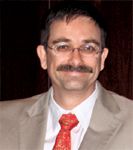
Eric Bouteiller (Beaufour Ipsen)
Many Strategies for Waging the Talent War
China has been called the pharmaceutical battleground of the future, and understanding this market will be at least as important as understanding the US or Europe, if not more so. Executives who understand China are already in hot demand at the headquarters of multinational firms and thus GM positions in China are highly coveted. At the same time the prospect of such a vast, rapidly changing and high stakes market can be daunting. One of the primary challenges that GMs face in China is extremely high turnover. Howard Sui, GM of Merck Serono, refers to an "ongoing talent war." He says, "Every company is committed to China and is expanding here. The competition for talent is quite intense." Training at Western firms is highly prized and some employees are looking to eventually 'cash out.' However, firms employ a wide array of strategies to retain top talent. As in any market, focusing on career development and providing opportunities for advancement is crucial. While salaries have gone up, many MNCs avoid bidding up salaries, instead offering training and frequent promotions in fast growing organizations. Perks can help as well. Mr. Mithen advises on the benefits of social events, noting, "We look after our staff and coordinate social activities such as company conferences, barbeques and the like. Interestingly, 10 to 15 years ago these kinds of perks were something most Chinese would not care about, but today these benefits are becoming more attractive." While MNCs offer, on average, better pay than local firms, local players find ways to adapt. For example, Mr. Zhang has built a relationship with the local government that allows the director of his central lab to have a position and publish through a local university. Mr. Zhang describes this as "a huge golden handcuff. This is a non-cash reward that allows me to be competitive with Quintiles but at a lower cost."
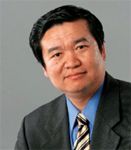
Dan Zhang (FMD)
A distinct genre of China oriented business literature has emerged, advising foreign managers on how to avoid cultural pitfalls in the Chinese workplace. There is certainly a Chinese management style that is often discussed. Mr. Grapow encapsulates this advice as "ensure employees get respect and recognition for their work. Praise in public, criticize in private." On the other hand, some firms have managed to build more of a hybrid culture, which prize outspokenness and minimize hierarchy. Bioduro exemplifies this mixed company culture, as an R&D outsourcing company founded by serial entrepreneur John Oyler. Oyler relates an anecdote that occurred during a visit from a French scientist. "He was asking where people on the team are from and they were telling him the names of some cities that he didn't recognize. I drew a rough map of China on the white board, and pointed out Beijing and Shanghai. The first team member said he was from Chengdu and I drew a star on the map where that was, and the next team member said Xian and I drew a dot for that city. This young scientist who had worked at our company for less than one year jumped up, ran to the board saying, "no, no, you're completely wrong," and grabbed the pen out of my hand and drew it a little further South on the map." Afterwards the French scientist remarked that even at his company, a first year team member wouldn't tell the CEO that he's wrong and grab the pen out of his hand.

Eric Zwisler (Zuellig)
However, beyond communication, the principle cultural barrier that newly arrived executives are cautioned on is 'Guanxi.' Often translated as relationships, many local executives claim they have it, while foreigners struggle to build it. Eric Zwisler, CEO of Zuellig Pharma, has over 20 years experience in China and seeks to debunk some of Guanxi's mystique. "When markets are inefficient, relationships are important. When markets are more efficient, relationships become less important because the markets become more systematic, professional, and objective in the way they operate." Mr Zwisler continues, "It may be a bit controversial, but I think the importance of relationships in this market is overstated. Relationships are a protective barrier to avoid change and a method of maintaining control in the market. If local companies use 70% relationship and 30% content, we use 70% content and 30% relationship, and we are just as successful."
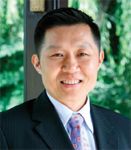
Howard Sui (Merck Serono)
Innovation: Provincial Style Central Planning
The Chinese central government has made a fundamental commitment to transforming the country from a manufacturing economy to an innovation-driven economy. The state has supported basic research for many years and its strong support for science education has created a highly trained pool of researchers. Wang Hongguang, of the China Naitonal Center for Biotechnology Development (CNCBD), notes that annual R&D investment has reached USD 44 billion. Mr. Wang relates that "the number of essays published in international journals is six times larger, and eight new drug applications were granted clinical approval. Compared to the year 2000, the number of patent applications between 2001 and 2005, has increased 11 fold."

Wang Hongguang (CNCBD)
"There is a significant political push on the national level to accelerate the growth and importance of innovation," notes Mr. Grapow. "However, the execution is completed on a provincial level. Some regions such as the Shandong Province or Shanghai Municipality have made a huge commitment to pharmaceuticals and biotechnology and pharmaceutical innovation will certainly play a role in such regions." One such Shandong pharma pioneer is Luye Pharma. The firm's banker turned entrepreneur, CEO Liu Dianbo, decided to axe a profitable API business in favor of focusing on moving up the value chain with formulations. Mr. Liu has also decided to take the road less traveled in building his business. "Luye is a small company that cannot afford a lot of new drugs," says Mr. Liu. "So we decided to focus on differentiating our drug delivery systems and concentrating on the most difficult applications with the aim of using these platforms to make a new global standard." Beijing has also produced a number of innovative firms, which are coordinated through the Beijing Pharma & Biotech Center. The center has helped a number of firms overcome early stage hurdles through its affiliate, the Alliance of Biobox Outsourcing (ABO). Ting Lei, Director of the center, described a member company who had "encountered obstacles in operation since the establishment of the company. We provided consulting services and convinced him to transform the core technology of his company, transitioning to a service based business model. The company then grew 10 times in two years." Despite the emergence of other innovative hubs, Shanghai is the epicenter for China's innovative industry, with a wide array of institutes, biotechs and service firms all engaging in cutting edge R&D. Most Big Pharma players have R&D facilities in Shanghai including Roche, Novartis, Eli Lilly, AstraZeneca, Pfizer, and GSK, while other firms such as Merck have established collaborations with local firms. These multinational firms followed the talent and infrastructure in coming to Shanghai, and that makes the local players the true success stories. WuXi PharmaTech pioneered the outsourcing trend, opening its doors in 2001 and its success has spawned a huge service industry whose epicenter is Shanghai's Zhangjiang Science Park.

One of the most unique firms in the Zhangjiang park is Shanghai Biochip (SBC). The company was initiated from 2000 and officially founded in 2001, when the mapping of the human genome had captured the worlds attention. Chairman Hua Yuda describes the context of the founding of the company, saying "the US and various European countries invested a great deal in developing the biochip industry. China had limited resources at the time and thus we decided to build up capacities in this area through this organization." This state backed approach to development has enjoyed significant success in lower tech industries. However there has been a more collaborative, public-private approach in R&D oriented sectors, particularly pharmaceuticals. Shanghai Biochip is designed to develop technologies that change the way research is conducted. Mr. Hua says, "We are providing research services designed to measure and test human disease and health conditions." China's vast potential pool of patients provides an excellent population for these diagnostics. The company has also been utilizing the country's large population to build out a sample collection quality standard and tissue bank in addition to genomics, pharmacogenomics and biomarker analysis platforms. Shanghai Biochip already provides these services to ten leading global firms. According to CEO of ShanghaiBio, the CRO of Shanghai Biochip, Dr. Jason Gang Jin, the company already has a number of validated biomarker analysis methods for personalized medicine research in clinical trials, in addition to genomics services for discovery researches. The company's highlight thus far, has been a biomarker analysis platform that allows physicians to target chemical and radiotherapy treatment regimes. Companies such as Shanghai Biochip are utilized as a site of translational research, whereby work done in universities and institutes be channeled into the market directly, without hoping for the market to develop on its own. Additionally, for core emerging technologies such as genomics, these technology platforms are a part of the push to catalyze expertise and jumpstart innovation. Reflecting a commonly held view, Mr. Jin is highly bullish on Shanghai's future as a hub for innovation citing Shanghai's highly trained scientists, dramatic MNC investment, ambitious local entrepreneurs and extensive outsourcing services. Mr. Jin says, "I have a bold vision that within five to ten years, Shanghai will become the epicenter of global pharmaceutical R&D."

Lilly R&D partnership with Hutchison Medipharma
Service Companies: Buffet or Gourmet?
The service sector boom, occurring primarily in Shanghai, has the potential to reshape the way pharmaceutical research is conducted. Firms have been experimenting with different risk sharing and outsourcing models and a single approach has yet to dominate the market. Chen Chunlin, Co-Chairman of Medicilon/MPI Preclinical Research – Shanghai sees "a trend among companies in the region starting with chemistry based services, adding preclinical services and then expanding with biology services." Medicilion was indeed one of the first firms to take this approach and it is now a major player in the space. The company entered a joint venture with US based MPI in order to broaden its service offerings and provide a more fully integrated approach to drug discovery outsourcing. Mr. Chen believes that the current wave of startups is just the tip of the iceberg. "I foresee an increased number of viable start-up companies as the bio-eco system and workforce matures in China. Many of my colleagues in the service sector, and in pharma positions, are frustrated entrepreneurs who eventually want to start their own companies to launch novel biologics and pharmaceuticals." Many firms including Wuxi Pharmatech, ChemPartner, and Sundia Meditech have achieved rapid growth and repeat customers with this business model. However, some of these newer firms have a different outlook on the best strategy to thrive in this crowded sector. Mr. Ji, from PharmaLegacy, sees a future in highly specialized services. Mr. Ji's philosophy is that "everybody can set up a good banquet, with every type of dish available. But there's still a market for a great coffee shop, and we want to brew the best coffee in town." Thus far, the market is hungry enough to sustain both models, but when supply finally comes to keep pace with demand for outsourced drug discovery services, there may be a sharp consolidation in the cards.
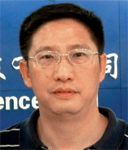
Xian Ping Lu (Chipscreen Bio)
Latecomers Face Growing Challenges
The Chinese challenge for Big Pharma is to scale up operations and start building profitability. However, a number of international biotechs and midsized players are only now starting to break into the market. These firms face a new set of challenges as the big MNCs have the incumbents' advantage and a broad array of dynamic local firms crowd the playing field. Mr. Zwisler warns new entrants, "The market is very, very competitive and the cost of entry in China is quite high. The time to market for registration and reimbursement, the scope and scale of sales forces needed, and learning to navigate in a complicated operating environment all contribute to a high barrier to entry." A company in just this position is Biogen Idec. The world's first biotech firm, Biogen Idec had previously targeted its international expansion efforts in Europe. Without an extensive branded generics portfolio to leverage, Biogen Idec has had to carefully time market entry, lest it invest too rapidly before the market could bear its products. General Manager David Yang seeks to ease his way into the market through partnerships. "When our products are approved we will form partnerships with local Chinese or foreign companies to help us commercialize our products," states Yang. "Operating in China is about recognizing risks and then minimizing them. This is a daily exercise where you are constantly evaluating where to share profits and where to go it alone." Another biotech to recently enter the market is Genzyme, which has attempted to overcome barriers to entry through intensive commitment to the country, including USD 90 million in R&D to produce the first cell therapies in China. Henri Termeer, the global Genzyme Chief Executive is also personally committed to building the business in China. Nonetheless, it still takes time to penetrate this market, and without support through the reimbursement system, Genzyme's orphan drugs have yet to realize any revenue in the Chinese market.

A strategy for overcoming these barriers is innovative product offerings. One of Biogen Idec's principal strengths is its product Avonex, which is currently the number one multiple sclerosis treatment in the world. Part of Avonex's success is owed to the firm's comprehensive follow up program, which includes advice and counseling. Mr. Yang seeks to replicate this program in China as part of a strategy to differentiate the firm's offering in customer service. He believes that these types of programs will elevate Biogen Idec above the competition to effectively penetrate this challenging market. As part of a longer-term strategy, Mr. Yang is looking to construct a regional clinical development plan for so-called 'Asian Diseases' in addition to investigating 'the full spectrum of pharmacoeconomic operations.' To this strategy, Mr Zwisler would add the following warning, "Be prepared that anything you do in China will take twice as long as you think, be twice as hard, and cost twice as much."
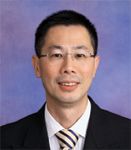
David Yang (Biogen Idec)
Conclusion
The dramatic changes underway in modern China are shaping the course of world events. China's image as a low cost manufacturer and source of 'me-too' products is on the verge of transformation, with thousands of firms vying to bring innovative products to market. As Big Pharma is leveraging this scientific talent to refill drug development pipelines, 'made in China' will certainly be joined with 'discovered in China.' The health care reform will introduce hundreds of millions of new patients to the benefits of modern medicine, accelerating the trend driven by urbanization and rapidly expanding purchasing power. Performance in the Chinese market today is likely a predictor for the global leaders of tomorrow. Thus, both as a market and as a source of innovation, the rise of China has already begun to transform the global pharmaceutical industry.
Note: Since the date of the interview, Michael Ryde has left Lundbeck China and is now working as Commercial Counselor, Teamleader Health, at the Danish Embassy in Beijing. Oscar Parra currently holds the position of General Manager for Lundbeck China. David Ricks is now the GM of Eli Lilly US and Christian Grapow is now GM of Solvay Pharma Italy.
Country Report: United Arab Emirates
March 1st 2020With an estimated annual growth rate of 10%, the Middle East is now consistently outpacing traditionally sought-after “pharmerging” heavyweights such as China and Brazil. The United Arab Emirates is at the center of this newfound momentum-asserting its own credentials as a prospective destination for big-ticket foreign investment in healthcare.
